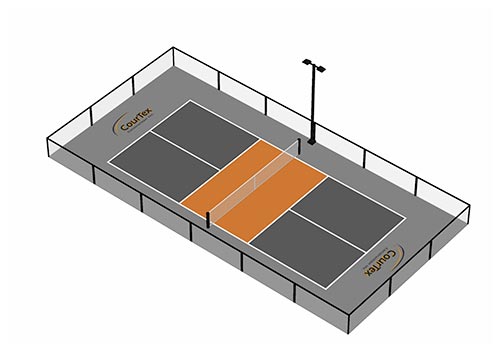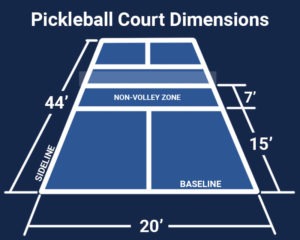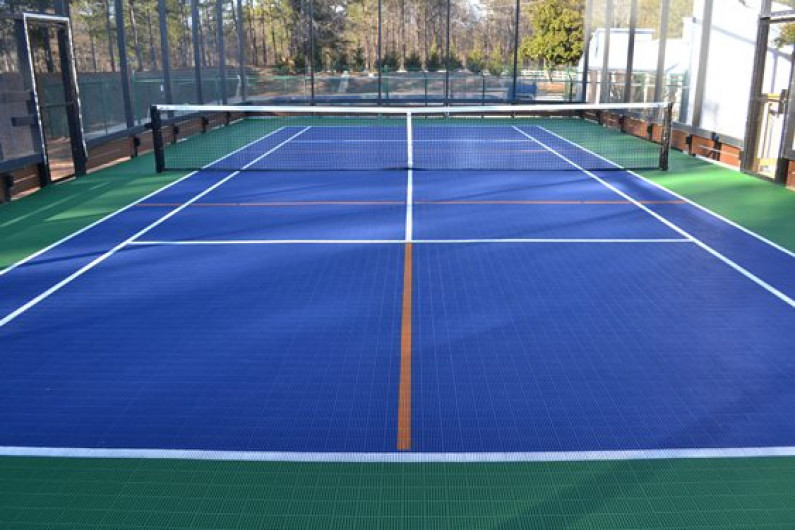Professional Pickleball Court Construction-- From Layout to Installation
Professional Pickleball Court Construction-- From Layout to Installation
Blog Article
Lasting Practices in Pickleball Court Construction You Need To Know
As the popularity of pickleball proceeds to rise, so too does the need for lasting practices in court building. This technique not just addresses ecological concerns but additionally enhances the durability and performance of the courts. From choosing eco-friendly materials to applying reliable water drainage and energy-saving lights remedies, there are numerous techniques to take into consideration. Yet, the impact of these techniques extends far beyond the court itself. Understanding exactly how each aspect adds to a much more lasting future invites further expedition right into the detailed equilibrium between entertainment development and ecological stewardship.
Selecting Eco-Friendly Products
Choosing environmentally friendly products is a crucial action in the building and construction of sustainable pickleball courts. The option of lasting materials not only decreases ecological effect yet also improves the long life and performance of the court. Trick materials consist of recycled rubber for the surface, which supplies superb resilience and shock absorption while drawing away waste from landfills.
Additionally, making use of locally sourced materials reduces transport emissions and supports regional economies. Pickleball court construction. Utilizing native hardwoods for fencing and seating can give a sustainable aesthetic while ensuring resilience against the elements.
Including absorptive products for court foundations can additionally add to sustainability by permitting all-natural water drainage and reducing drainage. These selections not just secure regional ecosystems yet also advertise healthier play atmospheres.
Effective Drainage Solutions
While the choice of environment-friendly products is necessary, applying effective drainage remedies is similarly important for preserving sustainable pickleball courts. Correct water drainage not just protects the court surface area from water damages however likewise reduces disintegration and drainage, advertising environmental stability.
Reliable drainage systems can consist of absorptive paving, which permits water to penetrate the ground as opposed to merging on the surface area. This decreases the possibility of standing water, which can result in mold and mildew and various other upkeep concerns. Additionally, including purposefully positioned water drainage networks and swales can guide excess water away from the court area, ensuring a dry playing surface area and preventing soil disintegration.
Using native greenery in the landscape design around the courts can even more boost water drainage by soaking up excess water and decreasing overflow. These plants call for less irrigation and promote biodiversity, lining up with lasting methods.
Additionally, it is crucial to regularly maintain the drainage system to guarantee its long-term performance. This consists of clearing particles and surveillance for obstructions. By focusing on reliable water drainage options, pickleball court producers can significantly add to the sustainability and durability of the center, eventually profiting both players and the setting.
Energy-Efficient Illumination Options
As the need for pickleball remains to grow, incorporating energy-efficient lighting options into court design has actually ended up being significantly important for sustainability. Standard lights systems often take in excessive power, adding to greater functional costs and ecological impact. Adopting contemporary, energy-efficient innovations is vital for both brand-new buildings and improvements.
LED (Light Emitting Diode) lights attracts attention as a top selection as a result of its longevity and energy cost savings (Pickleball court construction). Contrasted to standard illumination, LEDs use approximately 75% much less energy and can last approximately 25 times longer, dramatically decreasing upkeep costs. The directional nature of look at this now LED lighting lessens light contamination, making sure that illumination is concentrated on the court rather than surrounding areas.

Lasting Surface Area Alternatives
Discovering lasting surface alternatives for pickleball courts has gotten grip amongst gamers and building contractors alike. The focus on green products not just lines up with the expanding ecological awareness however also boosts the efficiency and longevity of the courts.
This material offers exceptional shock absorption, decreasing the threat of injuries for players while advertising sustainability. These ceramic tiles are very easy to change and mount, and their versatility enables for different court arrangements.
All-natural yard courts are likewise becoming a lasting option, promoting biodiversity and decreasing the warmth island result. Nonetheless, they require routine upkeep and linked here water, which may not align with all sustainability goals.

Water Conservation Methods

One more efficient technique entails the installment of rain harvesting systems. These systems gather and store rainwater for use in keeping court surface areas and landscaping. This method not just preserves potable water but likewise decreases dependence on metropolitan resources.
Moreover, employing drought-resistant landscape design around the courts is vital. Indigenous plants require much less water and are better adapted to regional climate problems, therefore decreasing overall water intake. In addition, utilizing efficient watering systems, such as drip irrigation, guarantees that water is supplied directly to plant origins, reducing evaporation and waste.
Final Thought
Including lasting practices in pickleball court building and construction considerably adds to ecological conservation and resource performance. Using environmentally friendly products, carrying out efficient drainage solutions, and adopting energy-efficient lighting alternatives can considerably lower eco-friendly effect. Checking out lasting surface area options and employing water preservation techniques improve the overall sustainability of these entertainment centers. By prioritizing these methods, the construction of pickleball courts can line up with more comprehensive environmental More hints objectives while advertising long life and capability within communities.
As the popularity of pickleball proceeds to rise, so also does the requirement for lasting practices in court construction.Choosing environmentally friendly materials is a crucial step in the building and construction of sustainable pickleball courts. By prioritizing energy-efficient illumination alternatives, pickleball court manufacturers can add to a much more lasting future while satisfying the requirements of stakeholders and players alike.Integrating sustainable surface alternatives not only enhances the performance of pickleball courts yet likewise leads the method for carrying out effective water preservation techniques.Integrating sustainable techniques in pickleball court construction substantially adds to ecological conservation and resource performance.
Report this page